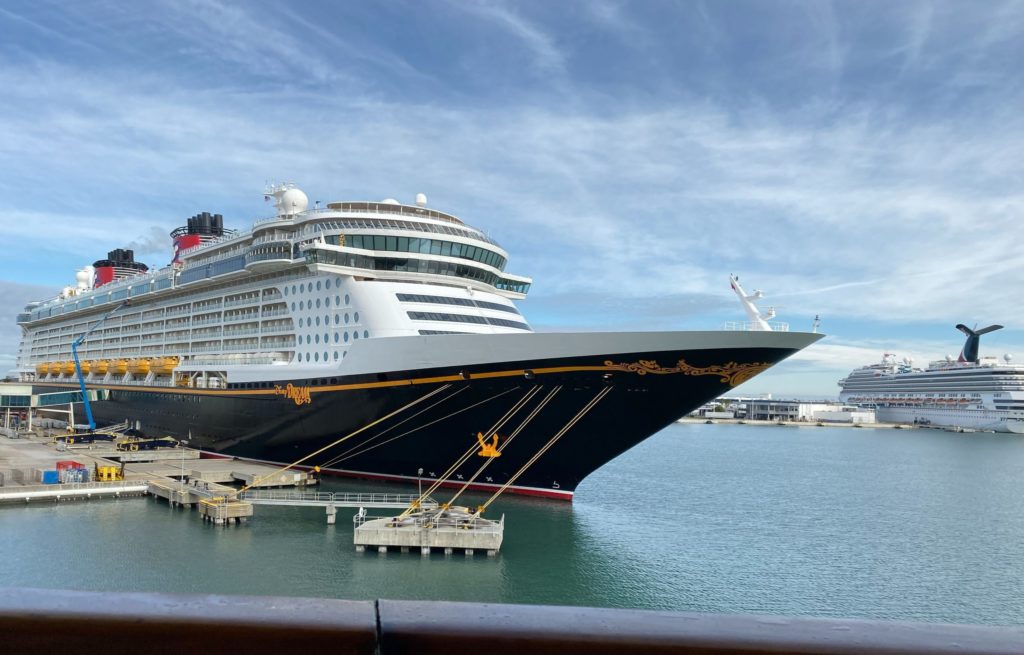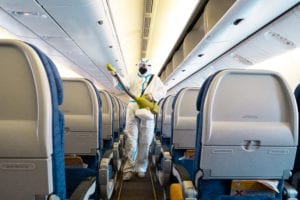In mid-March of 2020, the COVID-19 health crisis forced the cruise industry into a global pause. Cruise lines and the world’s economy suffered unimaginably for the next six months: More than half a million jobs were lost, as well as about $23 billion in wages and $77 billion in economic activity.
Though some ships resumed sailing in parts of Europe, Asia and the South Pacific in July 2020, the cruise industry has only recently begun to ramp back up in North America. Given its impact on the world economy, positioning the cruise industry to stay consistently open from this point on would be significant.
With such high stakes in place, cruise lines can’t underestimate the value of COVID-19 testing in the ongoing battle against the virus. The extra-contagious delta variant has appeared in all 50 states and verified in about 90 countries, including such popular cruise destinations as Mexico and much of western Europe. Beyond causing an eye-opening number of breakthrough cases (people who are fully vaccinated against COVID-19 but still test positive), this variant is expected to soon become the virus’ dominant strain.
Some cruise lines have established appropriately strict health protocols moving forward. Celebrity Cruises, Carnival Cruise Line and Norwegian Cruise Line plan to require eligible passengers to show proof of vaccination, as does Royal Caribbean International for ships departing from U.S. ports outside Florida. Again, however, vaccinations don’t mean individuals can’t carry the coronavirus, and testing can help find those cases.
But high health standards notwithstanding, cruises docked in Florida, Texas and Alabama are in a quandary, as businesses operating in those states are barred from requiring proof of vaccination. Not only does this mean certain cruise lines will have to about-face on their regulations or cancel certain outings, it also impacts cruisers’ booking decisions. Eighty percent of survey respondents said they’d rather sail on a ship that requires proof of vaccine than one that doesn’t.
With the virus raging on and restrictions on vaccination requirements in place, full-throttle COVID-19 testing — before, during and post-voyage — is the common-sense solution to keeping travelers safe and cruise lines afloat.
Testing enhances customer comfort and convenience
Successful cruise lines excel at providing passengers with comfort and convenience, both of which can be greatly enhanced by fervent testing efforts.
To understand the health risks of boarding a cruise, envision the ship as a city on the sea. The Centers for Disease Control and Prevention has deemed cruise ships to be at Level 3, or “high” risk, for people who are not fully vaccinated (more than 50% of U.S. citizens as of July 4). Healthwise, boarding a ship and traveling several days to its first destination is the equivalent to entering a high-risk city and not being able to leave for the same length.
We’ve seen how cruise ships, even prior to the COVID-19 crisis, have proven to be havens for highly transmissible diseases like norovirus. (Nearly 500 passengers on a Royal Caribbean ship fell ill from that gastrointestinal illness in 2019, as well as passengers on several European cruises.) As we’ve learned from the last 16 months of social distancing, close-quarter environments similarly catalyze the spread of the coronavirus.
Think back to February 2020, when hundreds of Diamond Princess passengers became infected while floating in the Pacific Ocean. Besides killing 14 cruisegoers, the virus effectively ended the ship’s voyage — and that was only the first domino to tip over. Within weeks, all the world’s cruise ships were emptied and indefinitely docked.
In today’s cruising restart in the post-vaccination era, the ease of disease spread is particularly frightening considering reported breakthrough cases that have already popped up on ships. Last month, two Celebrity Cruises passengers tested positive for COVID-19, even after the company claimed the vessel’s 1,200-plus occupants were “fully vaccinated.” If it weren’t for end-of-cruise testing that occurred 72 hours before passengers returned to the United States, the crew wouldn’t have known to isolate those passengers.
Though they drastically decrease the risk of contracting and being hospitalized by COVID-19, vaccines simply aren’t 100% effective, especially with the tenacious delta variant factored in (and Pfizer already is planning for a booster shot to address coverage gaps). By providing an extra layer of protection, intensive testing efforts will likely result in greater customer comfort. Cruise lines that commit to offshore and onboard COVID-19 monitoring also up the convenience factor for passengers. And when those companies offer that service with a partner, passengers save time and frustration associated with researching local, credible testing solutions.
Testing can keep the cruise industry financially afloat
Testing also can impact a cruise line’s business in the short and long term.
Let’s revisit customer convenience. In general, consumers would rather have something done for them than do it themselves. In the hospitality industry, any logistical barriers within the travel process (whether testing or another task) directly reflect the values of the brand — be it an airline, cruise line or rail operator. Diminished passenger volume and increased cancelation rates are bound to ensue.
By partnering with a particular testing provider, cruise lines can lift several burdens off passengers’ shoulders: researching vendors, understanding test options and paying extra for a test (if the partnership includes a discounted rate). Make it easy, and this kind of partnership could likely keep passenger volumes consistently high.
We know cruisers are more reluctant to board a ship with fewer health and safety measures in place. Such unease is antithetical to the spirit of cruising in the first place; customers are there to forget their worries, not be stranded at sea with them. By providing testing services, a cruise line showcases its dedication to passenger safety. Even when embarking from states where proof of vaccine is prohibited, cruise lines can comfort (and therefore retain) customers by upping testing efforts as the primary safeguard.
COVID-19 testing won’t just keep customers satisfied and below-deck cabins filled: It could potentially propel the entire cruise industry through the remaining pandemic. If it reacts slowly, the industry risks inviting the possibility of another prolonged closure period — one from which cruise lines might not again recover.
Testing before, during and after setting sail is easy with Worksite Labs
With PCR testing sites near popular U.S. cruise ports and a growing repertoire of services, Worksite Labs can provide high-quality, high-quantity testing for cruise passengers and crew members. Already with sites from Miami and Seattle, we recently expanded to two more Florida venues: West Palm Beach and Fort Lauderdale.
Since we test all specimens on site, we can deliver 98-99% accurate results within hours, and we can process thousands of samples at a time. That means passengers wouldn’t need to arrive days ahead of embarkation to receive required or recommended pre-departure test results, even if the ship is packed to the brim. We can even build portable labs especially for each cruise line and place them within even closer proximity to port.
The CDC also requires that all crew currently aboard any cruise ship provide clinical COVID-19 specimens, which then likely are transported and tested at a shoreside facility. Partnering with Worksite Labs locations close to port can help operators fulfill these requirements expeditiously, minimizing interruptions to daily operations.
Onboard surveillance testing is an effective means of keeping tabs on a ship’s health situation between ports, in case anyone on board picks up the virus while in a new place. (Again, the delta variant is popping up everywhere.) The most cost-effective ways to conduct onboard surveillance testing are antigen (rapid) testing or PCR pool testing, which mixes samples from a cluster of people and tests them as a single sample.
Worksite Labs already offers pool testing, and antigen testing is in process. Whichever means of surveillance testing is best suited for a particular ship or cruise line, we’ll build custom testing solutions to fit the needs. This will also ease the process when a ship ports in an international destination that requires visitors to test negative within a certain timeframe before arrival.
Finally, the CDC recommends post-travel testing for cruise passengers (even those who are vaccinated) within three to five days of leaving ship. Much like our pre-departure service, passengers can visit a nearby site once more upon returning to the U.S. Vaccinated customers who receive negative test results within a few hours don’t have to worry about self-quarantining once they get home.
When the cruise industry stays afloat, it doesn’t just mean providing services for an estimated 29.7 million passengers per year. It means sustaining more than 1.1 million jobs, billions of dollars’ worth of wages and global economic activity. And as the state of world health remains tenuous at best, persistent COVID-19 testing should be the clear priority for cruise lines hoping to maintain steady operations. Worksite Labs has the resources necessary to keep things moving for the U.S. cruise industry, even as the coronavirus threat still looms large.
Gary Frazier is CEO of Worksite Labs.




